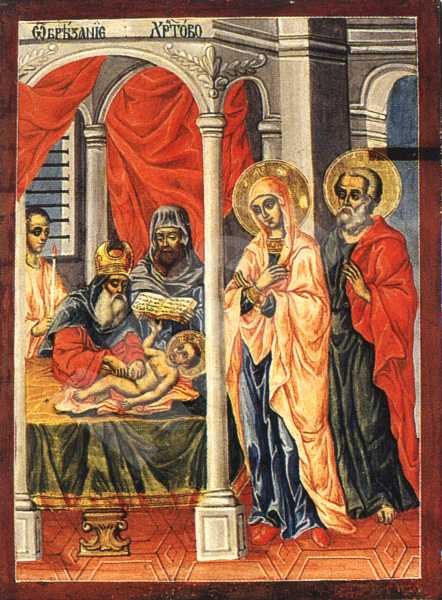The Circumcision of Christ
Type:
Icon
Period:
The beginning of the
19 century
Toma Vishanov-Molera, born around 1750, painter of icons and murals, founder of the Bansko school of art. He grew up in the family of the clergyman Vishan. Around 1765 he went to Vienna, where he studied painting. It is not known who were his teachers there or when he returned to Bansko. His fellow villagers called him the Moler, Molera(from German Maler ‘painter’), whence the entire family's surname. Under the influence of the European 18th century art Toma Vishanov painted his works in a new manner, unknown until then in Orthodox art. The figures are realistic, vivid, expressive. Toma Vishanov is an innovator in the early period of Bulgarian Renaissance. His ideas on art were not understood and at first were rejected by his contemporaries. His work has not been studied extensively. He died after 1811 in Bansko.
Dimmensions (cm):
32
/ 22
/ 2
Location
Country: Bulgaria
Province: Blagoevgrad
Town: Bansko
Church: St. Trinity
Source
Country: Bulgaria
Province: Blagoevgrad
Town: Bansko
Church: St. Trinity
Description
Holy Mother of God and the righteous Joseph are standing with arms crossed at a plank-bed, on which the priest of the temple is circumcising the Infant - an ancient Jewish rite, according to which all male children, having turned a fixed number of years, had to be circumcised. Present in the composition are one more cleric, who is holding an open book, and a young man with a burning candle in his hands. The scene is taking place in an interior, represented very realistically and decorated richly with Baroque elements. The graphic line-up and the colouring, as well as the vivid expression of the faces, suggest the professional skill and the talent of the founder of the Bansko school of art.
Iconographical technique: Combined
Used had also been the "wet into wet" method in the carnations. The varnish is applied thinly and evenly.The gilding of the aureoles is with gold-leaf and engraving.
Base material: Wood
The icon's base is made of a one-piece softwood panel, reinforced with two beams. The ground coat is of plaster, laid in a thin layer.
State, restoration traces and comments
There are traces of damages along the enclosing frame, as well as in some areas of the icon's painting layer. There are traces of a previous restorative intervention.


